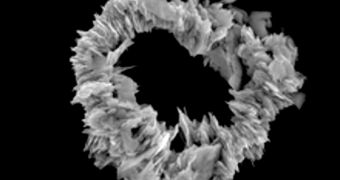At this point, in order to create highly-efficient, top-quality magnets, manufacturers need to use a class of chemicals known as rare-Earth elements (REE), supplies of which are starting to become unavailable. But new composite materials currently being developed could eliminate this need entirely.
REE are not a rare as their name implies. Rather, they are only produced en mass in China, and the country has started reducing exports to the rest of the world for various reasons. The Communist nation covers 95 percent of the global rare-Earth element production.
Chemicals from this group, such as neodymium, are used to make strong magnets, but scientists with GE Global Research hope that the new type of composite materials they are developing will be able to outmatch those performances, while eliminating the need for REE altogether.
This would contribute enormously to allowing the Western world to get rid of its dependency on Chinese chemicals. The Asian nations is currently using its position as a monopoly-holder in this area to leverage some of its other interests over other countries.
Magnets are used to create particle accelerators, medical imaging machines, efficient car engines and advanced wind turbines, and they need to be strong and light for most of these applications.
According to the GE team, their composites can meet these demands. By using them, it is possible to create magnets that are stronger and lighter than any others today, Technology Review reports.
The innovation could make its way to the market within the next couple of years. The new type of magnets experts are working on are nanostructured, an improvement that boosts their efficiency.
Generally, manufacturers used iron, boron, neodymium, dysprosium and terbium, among other chemicals, to produce magnets. Supplies of the latter three elements, which are REE, are running low.
“A lot of the story about rare earths has focused around China and mining. We believe technology can play a role in addressing this,” says the GE manager of material sustainability, Steven Declos.
The magnet research project the company is involved in is sponsored by the US Department of Energy (DOE), and also partially by the Advanced Research Projects Agency-Energy (ARPA-E) program.

 14 DAY TRIAL //
14 DAY TRIAL //